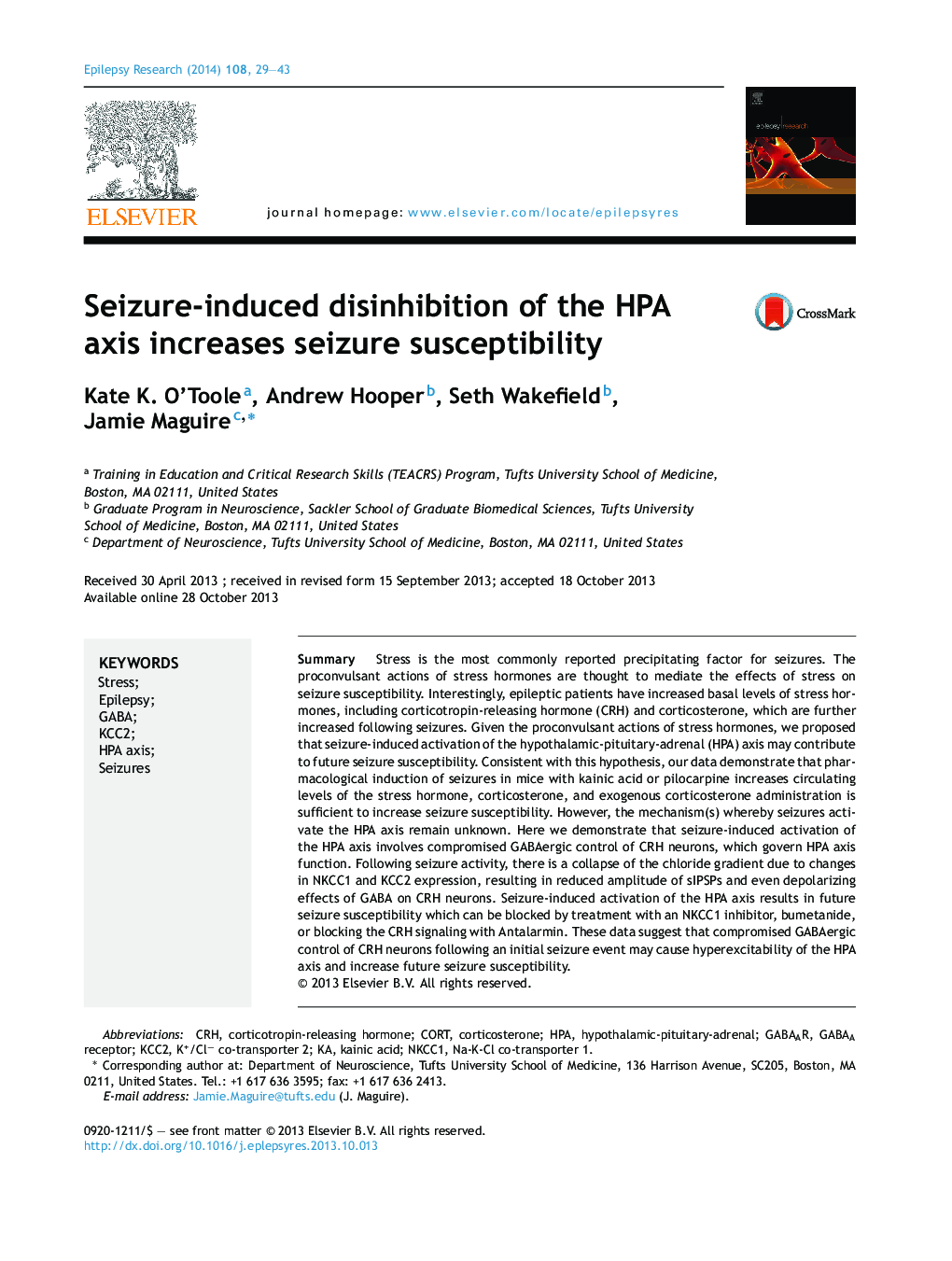| Article ID | Journal | Published Year | Pages | File Type |
|---|---|---|---|---|
| 3052150 | Epilepsy Research | 2014 | 15 Pages |
•Seizure-induced activation of the HPA axis.•Seizure-induced dysregulation in the GABAergic control of the HPA axis.•Compromised GABAergic inhibition of CRH neurons following seizures induced with kainic acid due to downregulation of KCC2.•Preventing seizure-induced activation of the HPA axis with Antalarmin decreased seizure susceptibility.•Preventing seizure-induced activation of the HPA axis with bumetanide decreased seizure susceptibility.
SummaryStress is the most commonly reported precipitating factor for seizures. The proconvulsant actions of stress hormones are thought to mediate the effects of stress on seizure susceptibility. Interestingly, epileptic patients have increased basal levels of stress hormones, including corticotropin-releasing hormone (CRH) and corticosterone, which are further increased following seizures. Given the proconvulsant actions of stress hormones, we proposed that seizure-induced activation of the hypothalamic-pituitary-adrenal (HPA) axis may contribute to future seizure susceptibility. Consistent with this hypothesis, our data demonstrate that pharmacological induction of seizures in mice with kainic acid or pilocarpine increases circulating levels of the stress hormone, corticosterone, and exogenous corticosterone administration is sufficient to increase seizure susceptibility. However, the mechanism(s) whereby seizures activate the HPA axis remain unknown. Here we demonstrate that seizure-induced activation of the HPA axis involves compromised GABAergic control of CRH neurons, which govern HPA axis function. Following seizure activity, there is a collapse of the chloride gradient due to changes in NKCC1 and KCC2 expression, resulting in reduced amplitude of sIPSPs and even depolarizing effects of GABA on CRH neurons. Seizure-induced activation of the HPA axis results in future seizure susceptibility which can be blocked by treatment with an NKCC1 inhibitor, bumetanide, or blocking the CRH signaling with Antalarmin. These data suggest that compromised GABAergic control of CRH neurons following an initial seizure event may cause hyperexcitability of the HPA axis and increase future seizure susceptibility.
